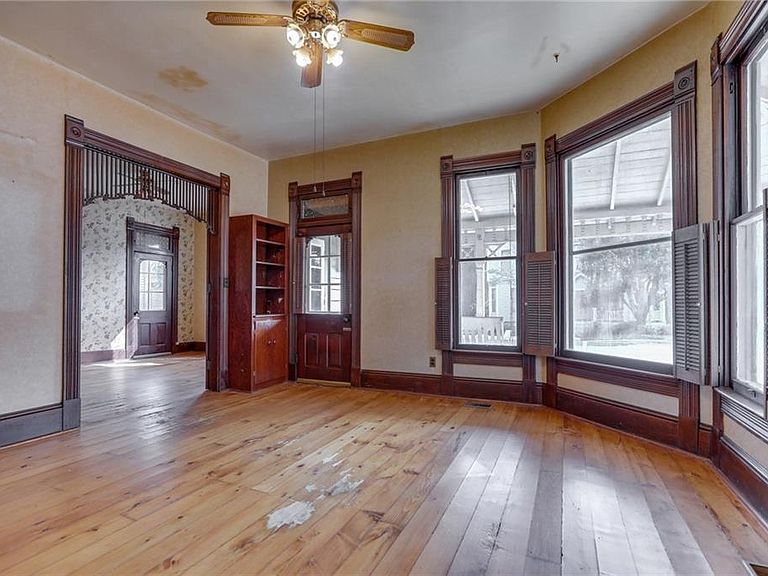A current trend we are seeing take place in this generation is a newfound appreciation for old wood floors. Many of us have scrolled social media and encountered a viral video of a homeowner restoring early 1900 wood floors and ripping out their luxury carpets. Why? This 3-part blog series will discuss the wood flooring phenomena by examining the historical timeline of wood floors from the late 1800s to 2023. We will also draw on the conclusion that craftsmanship will always outlive trends and technology. So, what’s the real reason why homeowners are saving old wooden floors?
Table of Contents
ToggleA Journey Through Time and Craftsmanship
When we hear antique or vintage, we often associate them with goods that have passed enough decades to transition from depreciation to appreciation in value. These terms could be used when describing old wooden floors because homeowners did not favor wood floors for the past two centuries. In today’s society, enough time has elapsed since hand-labored wood floors have become a delicacy and a rare find in historic homes and buildings. The same concept holds for specialty woodwork with trim, borders, and other household architecture. We can see a similar timeline of appreciation for cars. They are either old and worthless or old and a one-of-a-kind prized possession. Let’s explore the origin of wood floors and the skilled tradesmen who started the journey of indoor flooring in America. For wood floor tradesmen in their late 80s and 90s, this could be the breakthrough in perspective they’ve been waiting for, and it came just in time.
The History of Wood Floors in America: From Elite Luxury to Industrial Age Demand
Only the elite could afford such floors when wood floors originated here in the states. This was because wood floors were not the easy DIY install that we know them to be today. Wood floors resulted from intensive physical labor and specialty craftsmanship and were incredibly costly. As we look into the Industrial Age, we can pinpoint the origination of its development in America and the high demand that carried the trade well into the 20th century.
The Evolution of Wood Flooring Manufacturing and Installation Techniques in the Late 1800s and Early 1900s
In the late 1800s, wood flooring production began to take off. The country started to see flooring manufacturing companies pop up near big cities, and associations were established. One of the oldest wood flooring manufacturers in the US to date was the 1887 Maple Flooring Manufacturer of the United States. The side matcher was developed during this period, and the flooring was astonishingly thick and heavy. It came at a high cost for both production and shipping. Eventually, the end-matcher was developed, which allowed hollow-backing, and the wood flooring became lighter and thinner. The dry kiln was also developed and made adapting to central heating easier. Both these changes resulted in flooring mills booming production and generating significant revenue. However, even with efficient flooring mills, the industry still needed installers. Installers throughout the late 1800s and early 1900s worked with their bare hands, a bucket of nails, and a couple of hand tools. There weren’t electric tools, knee pads, or other accommodating accessories to make the installation easier.
The Golden Age of Floor Installers: Craftsmanship and Prosperity in the Roaring Twenties
As the 1920s approached, the roaring twenties proved to be a prosperous time for floor installers. The economy was doing great, and tradesmen were a hot commodity! This is the era the genuine tradesmen worked through. Sanding wasn’t relevant yet, so installers would kneel and scrape thousands of square feet of wood floors each week. This is a level of craftsmanship that today’s floor installers will never experience.
The Impact of Historical Events on Wood Flooring Manufacturing and Installers: From the Great Depression to War
The demand of the twenties didn’t last long until the Great Depression plagued America. The economy was hanging by a thread, and average families could no longer privilege themselves with maintained wood flooring. The tradesmen equally suffered as their work was not in demand.
The detrimental period of the Great Depression did not last forever. Soon, America was confronted with war, and the manufacturing companies and wood floor installers made a dramatic comeback. While this comeback provided ongoing work and significant revenue, it also had a negative consequence.
Read on to Part 2: Out with the New, in with the Old: Cheaper is Better, and Then Came Carpet









2 thoughts on “Out with the New, in with the Old: Why Homeowners are Saving Old Wooden Floors”
Old wooden floors are beautiful so nice to see this as a trend
Thanks for reading!